Three offers 61% population coverage on 5G, along with 99% population coverage on 4G & 3G.
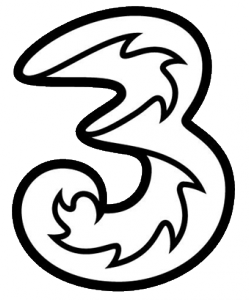 In the UK, Three offers 5G, 4G and 3G mobile network coverage. The fastest and most advanced form of coverage is Three’s 5G network which is available to 61% of the UK’s population (as of 2023). This can give you average download speeds of around 200Mbps, with peak speeds of up to 1,000Mbps (1Gbps).
In the UK, Three offers 5G, 4G and 3G mobile network coverage. The fastest and most advanced form of coverage is Three’s 5G network which is available to 61% of the UK’s population (as of 2023). This can give you average download speeds of around 200Mbps, with peak speeds of up to 1,000Mbps (1Gbps).
Outside of their 5G-enabled towns and cities, Three also offers 99% population coverage on their 3G and 4G networks. You can access average download speeds of around 20Mbps on 4G, with peak download speeds of up to 300Mbps.
In this article, we’ll discuss how you can check the coverage available from Three in your area, including where you’re able to see a coverage map for 5G, 4G and 3G. We’ll then discuss each coverage type in more detail, before looking at Three’s home broadband coverage and the international coverage you can expect when abroad.
Three Coverage Map
 The easiest way to check the coverage from Three in your area is by using their online coverage map. You can enter your postcode on the map to see an indication of whether 5G, 4G and 3G coverage are available. You can also see the different levels of coverage available (e.g. indoor coverage and outdoor coverage).
The easiest way to check the coverage from Three in your area is by using their online coverage map. You can enter your postcode on the map to see an indication of whether 5G, 4G and 3G coverage are available. You can also see the different levels of coverage available (e.g. indoor coverage and outdoor coverage).
We’d strongly recommend using Three’s online coverage checker before you sign up to a new contract with Three. For the most accurate results, you should also enter the name of the device you’re using on Three’s network:
Check Three Coverage (three.co.uk) →
You can use the tabs on Three’s online coverage checker to switch between 5G, 4G and 3G coverage maps.
For further information, continue reading on through the rest of this article to find out more about the different types of coverage available on Three. We’ll also discuss the things you’re able to do with each type of coverage and the download speeds available.
Contents
Overview of Three Coverage
In the UK, Three currently offers 5G, 4G and 3G coverage, with varying amounts of the population covered by each one:
| Three Coverage Type | Coverage Level | Supported Bands & Frequencies |
|---|---|---|
| 5G Coverage | ✔ 61% population coverage |
|
| 4G Coverage | ✔ 99.8% population coverage |
|
| 3G Coverage | ✔ 98.7% population coverage |
|
| 2G Coverage | ✘ Not available |
 You can access all three types of coverage on any price plan from Three, providing you have a device that’s compatible with it.
You can access all three types of coverage on any price plan from Three, providing you have a device that’s compatible with it.
For instance, Three offers 5G at no extra cost to all of their mobile network customers. You can therefore access 5G coverage if you’re using a 5G-ready device. This differs from many other networks where you’ll normally need to have a specific 5G-ready plan.
Notably, Three is the only UK mobile network not to offer any 2G coverage. This shouldn’t make a major difference to most users, unless you’re using an older 2G-only phone. In addition, some dual-SIM smartphones may not work correctly on Three if the secondary SIM card slot only supports 2G coverage.
Three also provides the underlying coverage for a number of other networks including iD Mobile, Smarty and Superdrug Mobile.
Three 5G Coverage
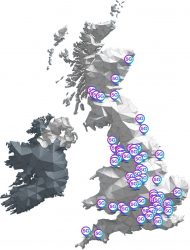 Three’s 5G network is their fastest and most advanced form of coverage.
Three’s 5G network is their fastest and most advanced form of coverage.
As of 2023, 5G coverage is available to around 61% of the UK’s population. It’ll give you an average download speed of around 200Mbps. In some cases, the peak download speeds on 5G can go even faster – up to 1,000Mbps (1Gbps) in some cases.
Three claims to be “building the UK’s fastest 5G network”. Their basis for this claim is the fact they hold the largest amount of usable 5G spectrum across all UK coverage providers. The amount of spectrum is an important determinant for the speed and capacity of a 5G network.
In total, Three has 140MHz of usable 5G spectrum, compared to 50MHz for Vodafone and 40MHz for EE and O2. This allows them to deploy a single 5G carrier of 100MHz which can offer peak download speeds up to twice as fast as that available on other networks.
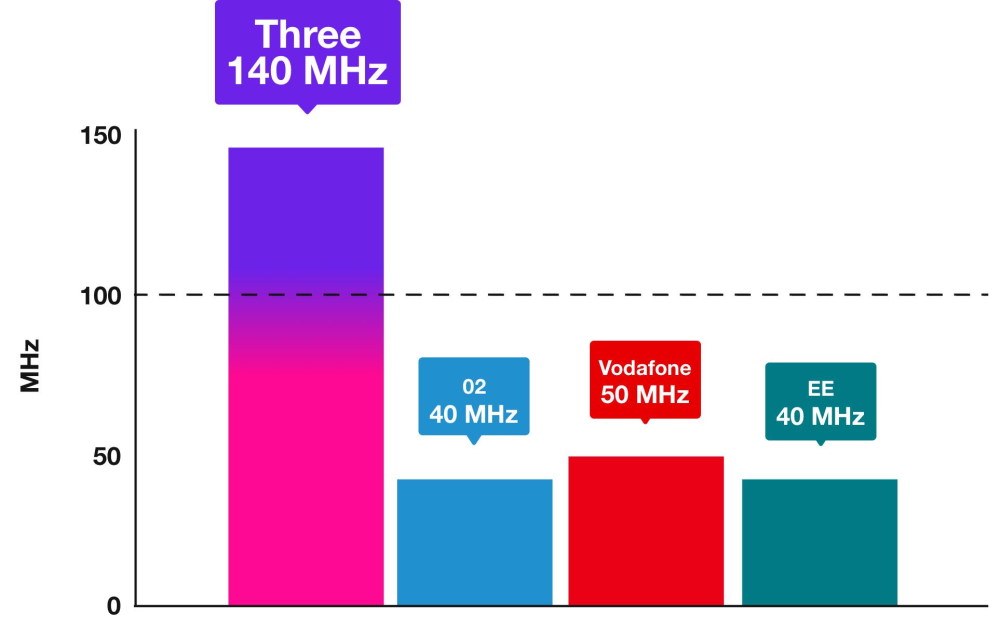
Three’s 5G coverage uses band n78 spectrum (3500MHz). Your 5G device will need to support this band if you’d like to access 5G coverage on the Three network. See our guide to Three’s 5G coverage for further information.
Three 4G Coverage
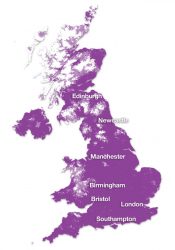 Three’s 4G mobile network launched in December 2013 and now covers 99.8% of UK’s population. It can offer download speeds of up to 300Mbps, with an average download speed in the region of 20Mbps.
Three’s 4G mobile network launched in December 2013 and now covers 99.8% of UK’s population. It can offer download speeds of up to 300Mbps, with an average download speed in the region of 20Mbps.
Historically, Three’s 4G network has mainly used band 3 (1800MHz) 4G spectrum. However, the 4G network has seen major upgrades over the past few years including the rollout of 4G Super-Voice (also known as 4G Calling or VoLTE) across the entire 4G network.
In 2019, Three started a four-year programme to upgrade their 4G coverage across the UK. Three says this upgrade will boost their network capacity and download speeds by up to 150%. They’re doing this by upgrading older 3G spectrum to 4G. This will introduce additional 4G coverage at band 1 (2100MHz). Additionally, 6,000 sites (mainly situated in busy urban areas), will get additional supplementary 4G coverage at band 32 SDL (1400MHz).
Three 3G Coverage
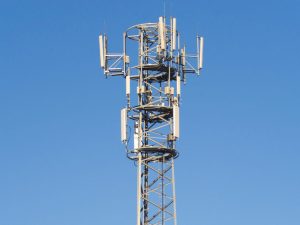 Three was the UK’s first mobile network to launch a 3G service, all the way back on the 3rd March 2003. Over the following 17 years, the 3G network has grown from humble beginnings to now covering 98.7% of the UK’s population.
Three was the UK’s first mobile network to launch a 3G service, all the way back on the 3rd March 2003. Over the following 17 years, the 3G network has grown from humble beginnings to now covering 98.7% of the UK’s population.
Today, Three’s 3G mobile network is used to carry phone calls, text messages and data. Normally, your mobile phone will only connect to 3G networks when 4G coverage isn’t available in your area.
In addition, some mobile phones will drop back to 3G coverage whenever you’re making or receiving a phone call (this is unless you’re using 4G Calling or Wi-Fi Calling). For this reason, it’s best to live in an area where you’re able to get both 3G and 4G coverage from Three.
Three’s 3G network uses 2100MHz spectrum. With their 3G coverage, it’s possible to access download speeds of up to 42Mbps using dual-carrier HSPA+ technology.
Three Home Broadband Coverage
 Three offers 4G home broadband and 5G home broadband in selected postcodes across the UK. This is an alternative to fixed-line home broadband, allowing you to get superfast home broadband without the need for a phone line or cable.
Three offers 4G home broadband and 5G home broadband in selected postcodes across the UK. This is an alternative to fixed-line home broadband, allowing you to get superfast home broadband without the need for a phone line or cable.
At present, Three’s 4G home broadband service is available in about 25% of UK homes (around 7.1 million households). Meanwhile, their 5G broadband service is available in major UK towns and cities.
The coverage area for Three’s home broadband service is smaller than that for their mobile service. This is because they only offer home broadband in selected areas with sufficient coverage and capacity. If you’re unable to get 4G or 5G home broadband from Three, you can always get a 4G Plus MiFi instead. This gives you 4G broadband with the additional benefit of being able to use it on the go. Alternatively, Three’s unlimited data SIM cards will also work inside a 4G router such as an unlocked Huawei B311 or Huawei B535.
You can check Three’s home broadband coverage by entering your postcode on this page:
Check Three Home Broadband Coverage →
For more information, see our Three 4G broadband review and our Three 5G broadband review.
International Coverage
 If you’re travelling abroad to another country, it’s possible to use your mobile phone through Three’s international roaming service.
If you’re travelling abroad to another country, it’s possible to use your mobile phone through Three’s international roaming service.
For customers travelling to one of 71 destinations (including most European countries, the USA, Australia and more), Go Roam allows you to use your mobile phone abroad at no extra charge. This is available to customers on both Pay Monthly and Pay As You Go.
If you’re travelling to a country that isn’t a Go Roam destination, additional charges will apply for using your mobile phone abroad. In some countries, there’s a Data Passport add-on which will give you unlimited data abroad for £5 per day. The Data Passport is currently available in Azerbaijan, Canada, Malaysia, Mexico, Moldova, Myanmar, Pakistan, Russia, Saudi Arabia, South Korea, Taiwan, Thailand, Tunisia, Turkey and the United Arab Emirates.
For more information, see our guide to Three’s Go Roam offer. Alternatively, you can check the international coverage maps through Three’s website.
Frequently Asked Questions
| How can I check the coverage on Three in my area? | You can check the coverage from Three in your area using their online coverage map. You’ll need to enter your postcode to see the results for whether 5G coverage, 4G coverage and 3G coverage are available where you live. |
|---|---|
| Does Three offer 5G coverage? | Yes. Three currently offers 5G coverage to around 60% of the UK’s population. You can see a full list of locations with 5G coverage from Three. |
| What download speeds are available on Three? | On Three, you’ll get download speeds of around 200Mbps on 5G and download speeds of around 20Mbps on 4G. In some cases, you might be able to get even faster peak download speeds (up to 1,000Mbps on 5G and up to 300Mbps on 4G). |
| What’s the coverage like on Three home broadband? | Three’s 4G home broadband uses the same underlying network as their 4G mobile service. However, their home broadband is only available in a selection of postcodes so you should check the coverage separately through this link.
Three’s 5G home broadband is also available in selected postcodes across the country, with average download speeds in excess of 100Mbps. |
| Does Three offer any international coverage? | Yes. You can use your mobile phone abroad through Three’s international roaming service (including in 71 destinations at no extra charge through the Go Roam offer). International coverage maps are available on Three’s website. |
More Information
Please see Three’s official website for further information about their network and coverage. You can also read our full guide to 5G on Three.
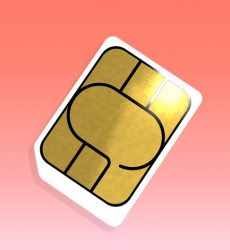
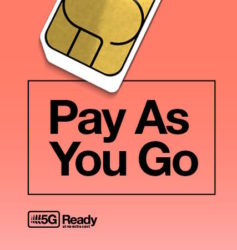
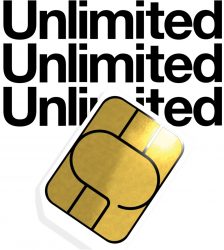

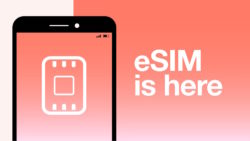



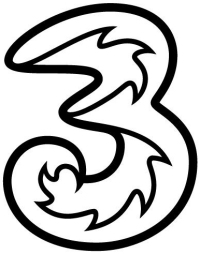
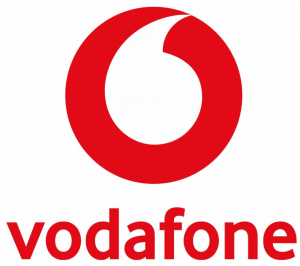
Max said:
Hi Ken,
Do you know if Three supports speed >300mbps on 4G?
I found this article but does not say what is supported.
https://www.ispreview.co.uk/index.php/2018/11/three-uk-finally-adopts-carrier-aggregation-to-boost-4g-speeds.html
I am thinking of switching to 4G and wanted to understand if it s worth getting a cat11 4g router that can potentially be faster or I will be restricted to Three speed in the end.
Thanks
Ken replied:
Hi Max,
Great question! I’m not sure, to be honest. I know they’ve recently been upgrading their 4G in some areas but I’m not quite sure what the maximum possible speed is at the moment. The Cat11 router might give you better performance regardless (e.g. if it supports 4×4 MIMO) but the only way to find out would probably be to test it yourself (keeping an eye on the returns policy, in case it doesn’t have an impact).
Ken
John Winter said:
Still no 5g in hull,I’ve had virtually a non existence 4 g with all the excuses they keep giving us all.I don’t think 18 mths without a proper service is GOOD ENOUGH.!!!!
Paul Chetwynd said:
Hi, my postcode is TD9 0LF, Tollbar, Hawick. My checker says I get 3g and 4g then the map says I don’t.
Which do I get please as I want to change to Three.
Thank you.
Ken replied:
Hi Paul,
Thanks for your comment. The best way to find out might be to order a free Pay As You Go SIM card from Three. You can simply stick this inside your handset to check the level of coverage available on Three.
Hope this helps,
Ken